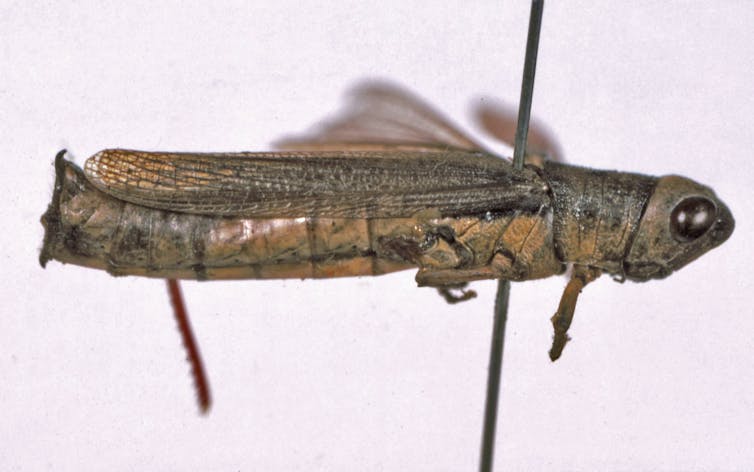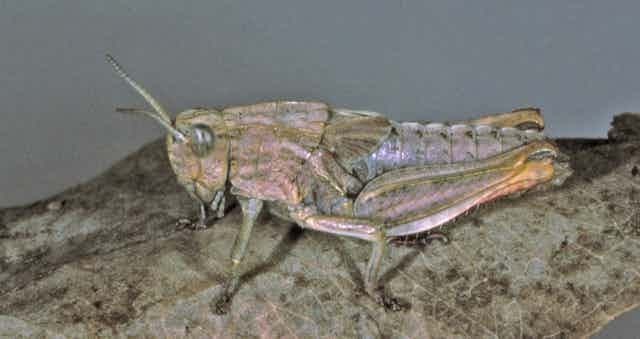There are some 700 known species of grasshopper in Australia. But, fewer than half have been described. This is creating an information gap, and some species have fallen in.
Schayer’s Grasshopper (Schayera baiulus) was first collected in 1842 from a property in north-west Tasmania. These few tattered specimens can be found in the Zoologisches Museum Berlin, and for 150 years were the only thing known about the species.
Efforts to rediscover this Grasshopper were at first unsuccessful but were then followed in 1988 by the discovery of several juvenile grasshoppers. These were from Cape Grim at the far north-west tip of Tasmania, and Rushy Lagoon in the north-east. These discoveries expanded the possible range of the species by around 100 km. Each of the small number of specimens was immature so there is slight doubt as to their precise identity.
Another species, the Pilliga Grasshopper (Genurellia cylindrica), is known from a single female specimen collected decades ago from Pilliga in New South Wales. It is the sole member of its genus but from this single female a specialist can determine that it belongs to a “[tribe](http://en.wikipedia.org/wiki/Tribe_(biology)” of grasshoppers that live in shrubbery or on the twigs of small trees.
Status
Schayer’s Grasshopper is on the IUCN Red List as Critically Endangered. But is it threatened? It’s likely that once the precise habitat is discovered it will be easier to find the species. Some other grasshoppers from the same tribe do seem to have very restricted distributions.
A few visits to the Pilliga site have failed to locate any additional Pilliga Grasshoppers. Can we say that the species is “rare” or “endangered” or even “extinct”? At this stage we really do not know.
Threats
At Pilliga fires and clearing have reduced and changed the habitat, although it isn’t known if this has impacted on the grasshoppers.

Strategy
There is no strategy for conserving grasshoppers in Australia.
Conclusion
The field of monography (detailed studies at the species level of related groups of plants and animals) is virtually dead in Australia. While a few positions still exist, the trend has been away from this tedious and often unappealing form of research towards the more trendy and grant-attracting fields like molecular biology.
We face a big problem in the future. Courses in plant and animal taxonomy have largely disappeared from most university curricula. This is not just a problem in Australia; it is occurring elsewhere as well.
All of this seems counter-intuitive when you consider the emphasis that we place on recognising and protecting threatened species. With fewer and fewer specialists, who will know enough identify and count these species?
The Conversation is running a series on Australian endangered species. See it here

